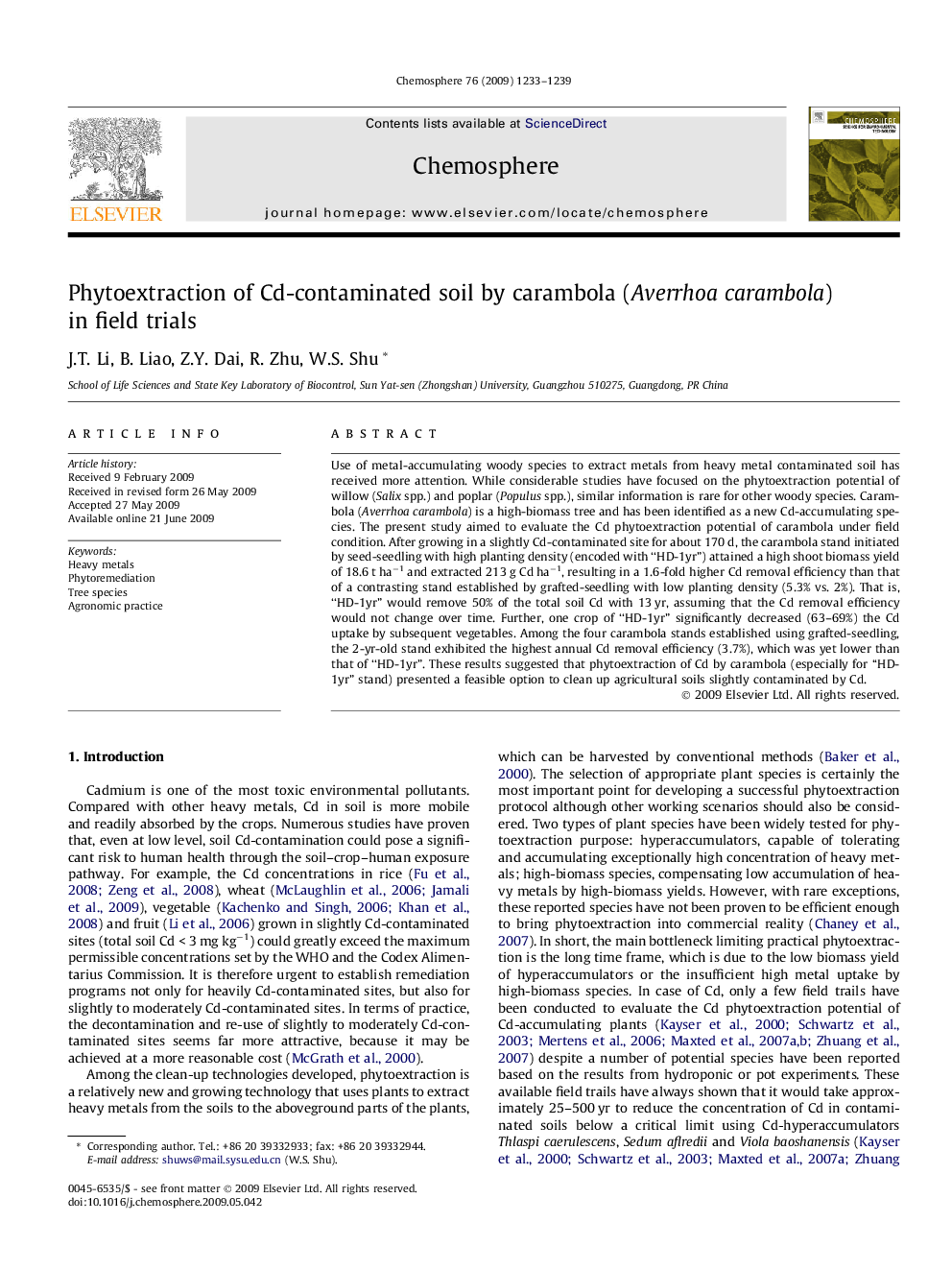| Article ID | Journal | Published Year | Pages | File Type |
|---|---|---|---|---|
| 4412679 | Chemosphere | 2009 | 7 Pages |
Use of metal-accumulating woody species to extract metals from heavy metal contaminated soil has received more attention. While considerable studies have focused on the phytoextraction potential of willow (Salix spp.) and poplar (Populus spp.), similar information is rare for other woody species. Carambola (Averrhoa carambola) is a high-biomass tree and has been identified as a new Cd-accumulating species. The present study aimed to evaluate the Cd phytoextraction potential of carambola under field condition. After growing in a slightly Cd-contaminated site for about 170 d, the carambola stand initiated by seed-seedling with high planting density (encoded with “HD-1yr”) attained a high shoot biomass yield of 18.6 t ha−1 and extracted 213 g Cd ha−1, resulting in a 1.6-fold higher Cd removal efficiency than that of a contrasting stand established by grafted-seedling with low planting density (5.3% vs. 2%). That is, “HD-1yr” would remove 50% of the total soil Cd with 13 yr, assuming that the Cd removal efficiency would not change over time. Further, one crop of “HD-1yr” significantly decreased (63–69%) the Cd uptake by subsequent vegetables. Among the four carambola stands established using grafted-seedling, the 2-yr-old stand exhibited the highest annual Cd removal efficiency (3.7%), which was yet lower than that of “HD-1yr”. These results suggested that phytoextraction of Cd by carambola (especially for “HD-1yr” stand) presented a feasible option to clean up agricultural soils slightly contaminated by Cd.
